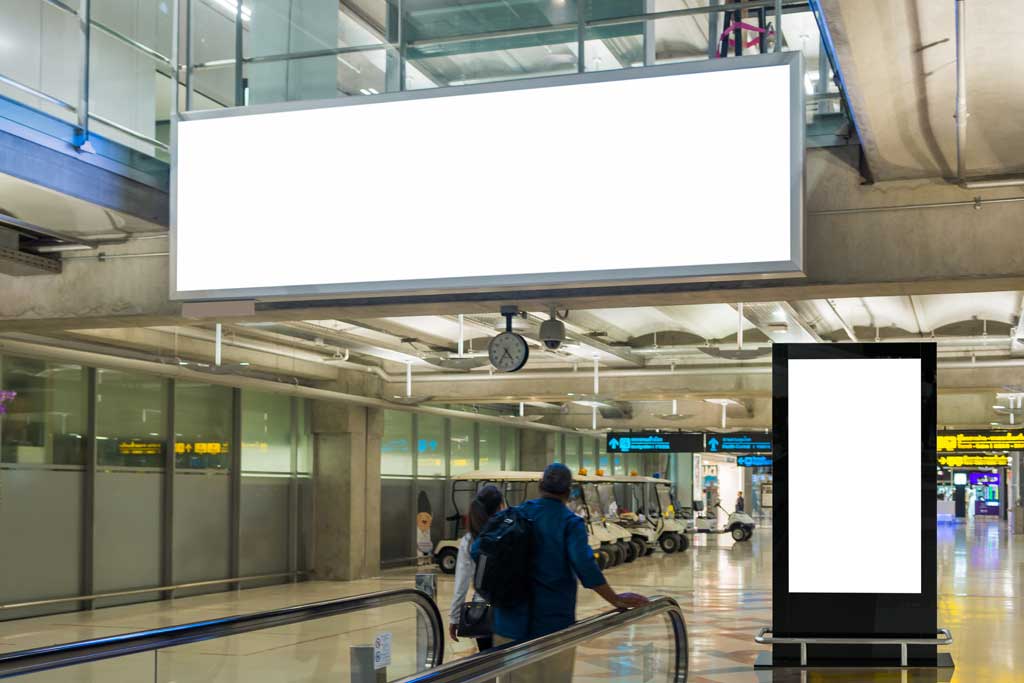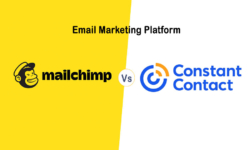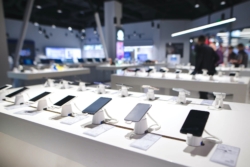Today’s rapid adoption of mobile devices has driven consumer demand for real-time information, creating new opportunities for businesses to engage and reach more consumers than ever before. Large format displays and digital signage gives us the power to communicate more effectively with dynamic and engaging messaging. Known as Digital-Out-Of-Home (DOOH) advertising, digital signage solutions are emerging in all marketing segments – from the very basic digital sign to the incredibly sophisticated deployment of hundreds of advertising displays or menu boards.
Four Pillars of Digital Signage
The number of displays and complexity of configuration are only limited by imagination and budget. Before deploying a digital signage strategy, businesses must take into account the four functions, or pillars of this effective communication tool.
Advertise – Just like their print counterparts, a digital sign can be used to advertise products or services. A company with an extensive network of digital signage in high-profile, high-traffic locations can generate an attractive and steady revenue stream from advertisers while still using the signage to communicate its own messaging.
Educate – Educating customers crosses the line between advertisement and information. A digital menu board is a great example of this. The main purpose is to educate viewers about menu items, showcasing prices, product descriptions, ingredients or calorie count. Yet it also serves to advertise menu items and entice buyers.
Inform – The digital signs posted at airports and train stations are prime examples of how digital signage is used to provide valuable information, using timetables and route maps to an audience.
Entertain – In some environments, this may be the primary purpose of digital signage, but in most cases it will be a secondary concern for businesses. Nonetheless, digital signage content should entertain the audience at least enough to keep their attention. This could include a live TV feed or short video clips, side-by-side with company messaging and other digital content. Large format displays gives the end-user the power to communicate more effectively with enhanced messaging.
Benefits of Going Digital
There is plenty of overlap among these four pillars, and they are by no means mutually exclusive. If the distinctions seem blurred that is precisely because digital signage technology allows for multi-purpose messaging. Trying to keep digital signage content strictly within one category may prove counterproductive. A signage strategy that covers all four categories takes full advantage of the medium’s capabilities. Intelligent and informative messaging is achievable with traditional printed signs; however, a digital format offers many benefits that can’t be ignored.
Cost – In the past, the high cost of the total system and installation prohibited mass adoption. Today, the cost of installing a digital signage system can be surprisingly low, and as more innovation takes place, performance will increase as costs further decline. With the advancements in cost-effective media player technology for instance, and the usage of cloud computing services, digital signage solutions can offer rapid ROI for most customer applications, large or small.
Flexibility – With digital signage, one can update messaging and content virtually and instantaneously. It also empowers businesses to deliver up-to-the-minute communications to key customers. The digital medium offers new flexibility for crafting company messages with video, live TV, real-time data feeds (e.g. weather, news, stock prices) and more.
Engaged Customers – Customer attraction and retention rates jump almost immediately in response to dynamic digital media. In retail environments, it is reported that digital media drives traffic and increases revenues. The ability to provide relevant messaging, entertaining content, and highly engaging multimedia makes digital signage more compelling to customers. The trend for future signage is to leverage more Full HD 1080P video and less static signage as trends have determined that crisp colorful video content entices more consumers and drives impulsive purchase decisions. New and emerging technologies in display solutions have also the lower cost of processing these technologies have made this possible. Also, with the increased usage of file formats, such as HTML5 and H.264 video compression, video is easier to manage over the network and takes less storage space.
Emerging Trends in Digital Signage
As businesses look to digital signage technology to improve the bottom line and engage more customers, it becomes critical to look ahead at the emerging trends worthy of investment in the future.
Future Screen Sizes and Types – Screen sizes is one emerging trend predicted to grow exponentially in the next few year. Something as simple as a digital photo frame may be the perfect solution for a small retail shelf or countertop. However, the installation cost for running power on a small screen can be a major roadblock to users. With technology advances such as POE (power over Ethernet), AC power construction is not required. This POE trend is a game-changer for mass adoption of small screen signage for the retail shelf as well as hospitality applications.
Interactivity – Interactive displays is another growing trend in the signage industry as consumer behavior is driven by the popularity of smart phones and tablets. Touch screen interactivity in particular makes content exponentially more compelling. Interactive digital signage enables rich usage models such as navigating product catalogs, browsing menus, requesting specific information, and even placing orders. In a connected world of web apps and media tablets, customers appreciate the intuitive and familiar feel of interactive signage for on-demand information. If it keeps your audience more engaged for a longer period of time, the investment is well worth it.
Further, recent innovations in interactive signage have been increasingly beneficial to businesses: the development of large format touch screens, facial recognition technology with embedded cameras, and near-field communication (NFC) are considered the next “big thing” in digital signage.
Near-Field Communications (NFC) – NFC technology allows users or “viewers” to instantly transfer data between a digital sign and a mobile device, or conduct a purchase transaction right on the retail floor. An NFC chip establishes connections and automates information exchanges in less than 0.1 seconds. These characteristics minimize signal interferences, and at the same time, enhance data security when transmitting personal information. Due to the short distance, high speed and data security, NFC is an ideal method of sharing data or making mobile payments between two devices at close range.
NFC is best known for its potential to enable a wide variety of new functions on mobile and other devices. According to ITU News, now that Windows 8 supports native NFC stacks, a wider range of potential users and uses will surface, including validating IDs, brokering cashless payments, unlocking doors, and automating data exchange in larger screen digital signage installations.
Media Players and Networking– A media player is the device that drives the various types of media content to your displays. The key requirement is that your media player supports the types of content files you want to display. With most of the x86-based media players available today, this is not a problem: the most popular photo and video file formats are supported, as well as common office documents and PDFs in many cases. Some newer models even support HTML5 and may include pre-made widgets one can utilize in signage design.The media player is most often a separate unit but some of the newer displays now include built-in media players to play JPEG images and or MPEG digital video files. These integrated players are great for convenience but larger installations will require external media players with networking capability.
For expansive multi-screen installations or video walls, a networked solution is ideal. A single media player, or computer, can drive a network of several displays providing the displays have loop-through capability and support “tiling.” For delivering native resolution to each screen, a multi-output video card and video splitter is required. This allows the ability to present Full HD content on every display instead of scaling the content over multiple displays.
These advancements have brought product and service demonstration closer to the consumer in a convenient, customer-centric way. This is an exciting and still relatively new technology, which continues to evolve, although the technology is mature enough to offer affordable and reliable solutions today. Forward-thinking businesses that want to communicate more powerfully and effectively would do well to consider integrating digital signage in their marketing strategy.
The WOW Factor – In the past, digital signage was the domain of high-end luxury brands and big-dollar venues, but today it’s more accessible than ever for businesses of all sizes and budgets. Digital signage is modern, high-tech and “cool.” Even a modest digital signage installation – for example, a single small-screen display on a retail shelf or countertop – can affect a consumer’s impression that results in an uptick in sales.
As interactive displays and kiosks become more cost-effective, the technology is opening up opportunities for creative digital signage strategies across vertical markets such as healthcare, retail, manufacturing, education and hospitality. Understanding the four pillars of digital signage is essential in establishing an effective signage strategy for your business, and to ensure the investment brings maximum ROI.







